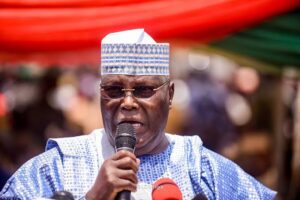BREAKING: Nigeria’s debt to GDP ratio crosses 50% for the first time

Nigeria’s debt-to-GDP ratio crossed 50% for the first time ever last week after the Debt Management Office published the country’s latest public debt figures.
According to the DMO, Nigeria now has a public debt portfolio of N121 trillion, consisting of domestic debt of N65.6 trillion and a foreign debt portfolio of $42.1 billion (which converts to N56 trillion when converted to Naira).
As of December 2023, Nigeria’s total gross domestic product (GDP) was N229.9 trillion in nominal terms, though it grew by only 2.74% in real terms. This suggests that the country’s debt-to-GDP ratio is now above 50% for the first time.
READ ALSO: Northern security better under Tinubu – Shehu Sani
Nigeria’s latest Debt to GDP
In the first quarter of 2024, Nigeria recorded a nominal GDP of N58.5 trillion, up from N51.2 trillion in the corresponding period in 2023.
- However, in the second and third quarters of 2023, the nominal GDP figures were N52.1 trillion and N60.6 trillion, respectively.
- The fourth quarter GDP rose to N65.9 trillion, making the trailing four-quarters GDP total N237.5 trillion.
- Based on the 2023 GDP figure of N229.9 trillion, Nigeria’s debt-to-GDP ratio is 52.9%, marking the first time the country has reached such a high debt-to-GDP figure.
- Using the trailing four-quarter GDP figure of N237.5 trillion, the country’s debt-to-GDP ratio also stands at 51.2%
Why this matters: Nigeria has often viewed its ‘low’ debt-to-GDP ratio as a sign of the country’s economic resilience, suggesting there was more room to expand its borrowing capacity.






